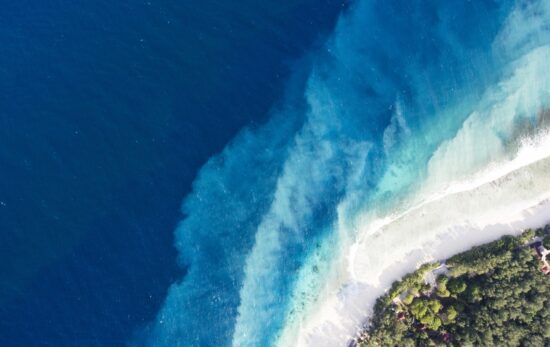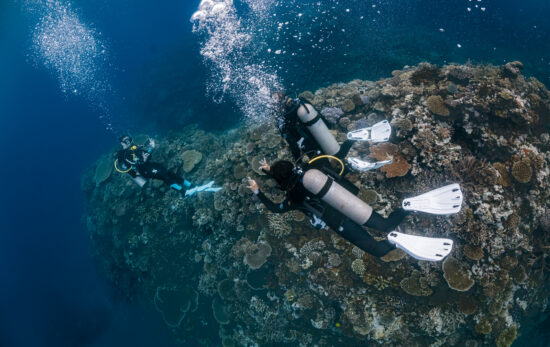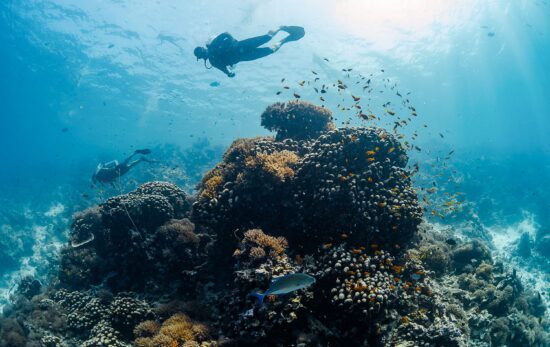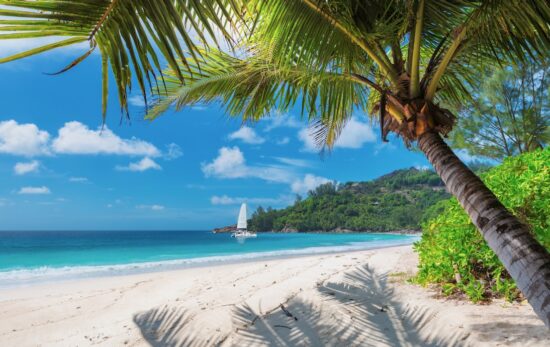Even the most beautiful dive sites can become predictable and even boring. For many scuba divers, the need to take the adrenalin rush to the next level is ever present. The good news is that divers everywhere are pushing the boundaries to discover sites with exciting elements from overhead icebergs to unexploded bombs. With the proper training and preparation, the most extreme dive sites can offer the thrill of a lifetime.
If you prefer to live life on the edge, check out these 9 destinations, the most extreme dive sites on Earth.
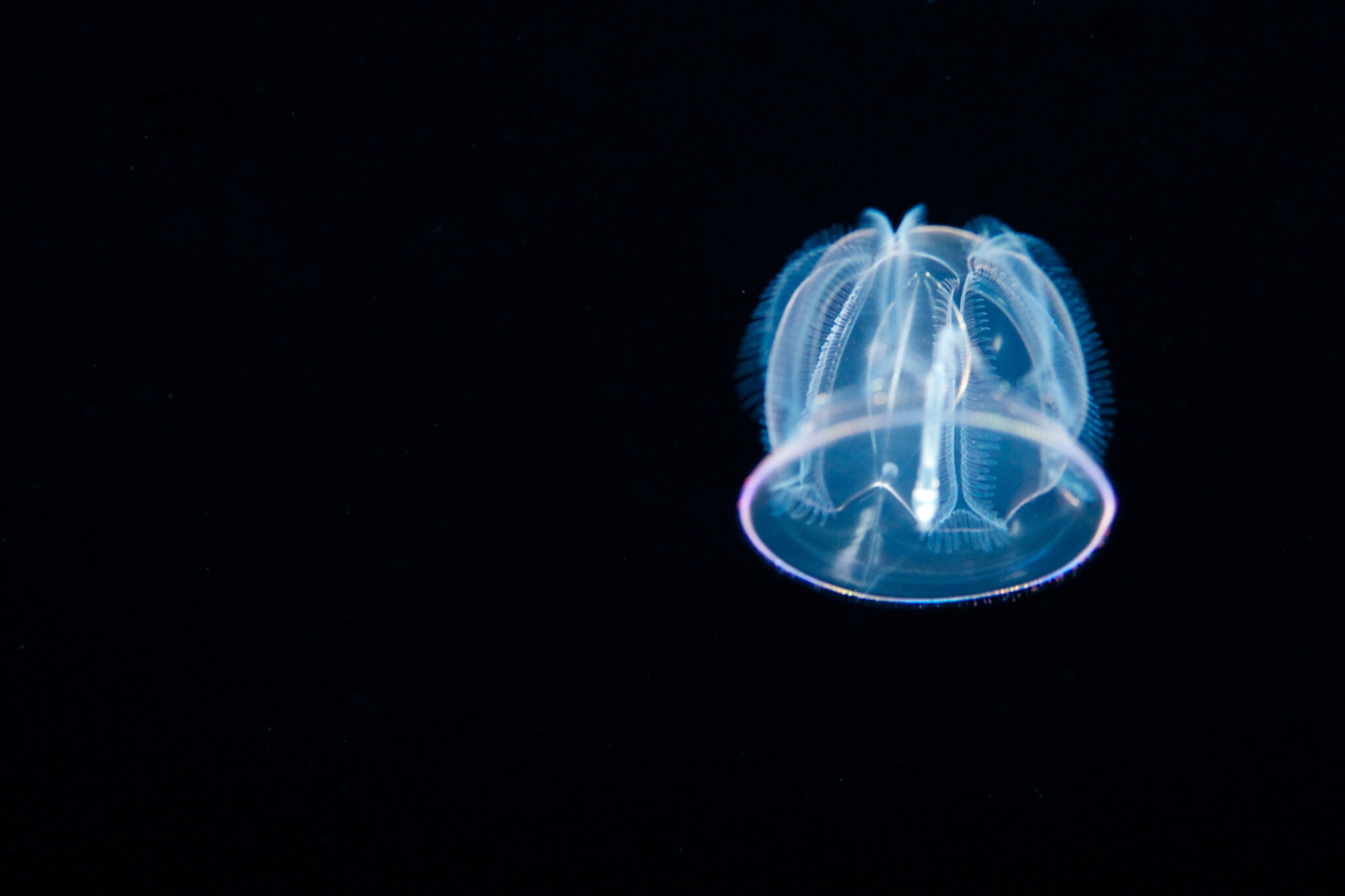
1. Black Water Diving – Kona, Hawaii
The most nerve-wracking night dive many will ever attempt, black water diving involves tying scuba divers to the bottom of a boat and suspending them in pitch black water. This type of diving usually occurs in the deep channel offshore Kona where sea depths can reach thousands of feet, but divers bottom out at 50 feet (15 meters). In the dark of night, strange bioluminescent creatures such as colorful jellies rise to the surface to feed. In doing so, they create their own light and a psychedelic show for divers brave enough to descend into the darkness.
- Dive Type: Night Dive
- When to Go: April to October
- Recommended Training: Night Diver, Underwater Photographer

2. Lake Titicaca – Bolivia & Peru
Lake Titicaca, which sits on the border between Bolivia and Peru, is the highest navigable lake in the world at 12,507 feet (3,812 meters) above sea level. As such, the lake has been a perpetual draw for altitude divers. The water here is neither clear nor warm, but there is plenty to see in the lake. In 2000, archaeologists diving in the lake even discovered submerged ruins of an ancient temple, thought to pre-date the Incan empire. The lake is also home to the rare Kaira frog. Keep in mind that because of Lake Titicaca’s extremely high altitude, you’ll need to be properly trained and briefed before diving here.
- Dive Type: Freshwater, Altitude
- When to Go: July to November
- Recommended Training: Altitude Diver, Dry Suit Diver
3. The Temple of Doom – Tulum, Mexico
Aptly deemed ‘The Temple of Doom,’ Cenote Esqueleto in Mexico is not particularly difficult in the very beginning. Where sunlight penetrates the cenote, swimming around without anything overhead is actually quite easy, but once divers have entered the tunnels, things become more and more dangerous. The skull and crossbones sign should be warning enough to scare off most, but those who dare face a combination of intricate tunnels and pure darkness. Do not enter the cave section of this dive without proper training, and do not attempt the cavern section without a properly trained guide. This cenote in particular is infamous for causing divers to lose their way, but proper preparation and training can prevent accidents from occurring.
- Dive Type: Cavern Dive (to Cave Dive)
- When to Go: May to September
- Recommended Training: Cavern Diver
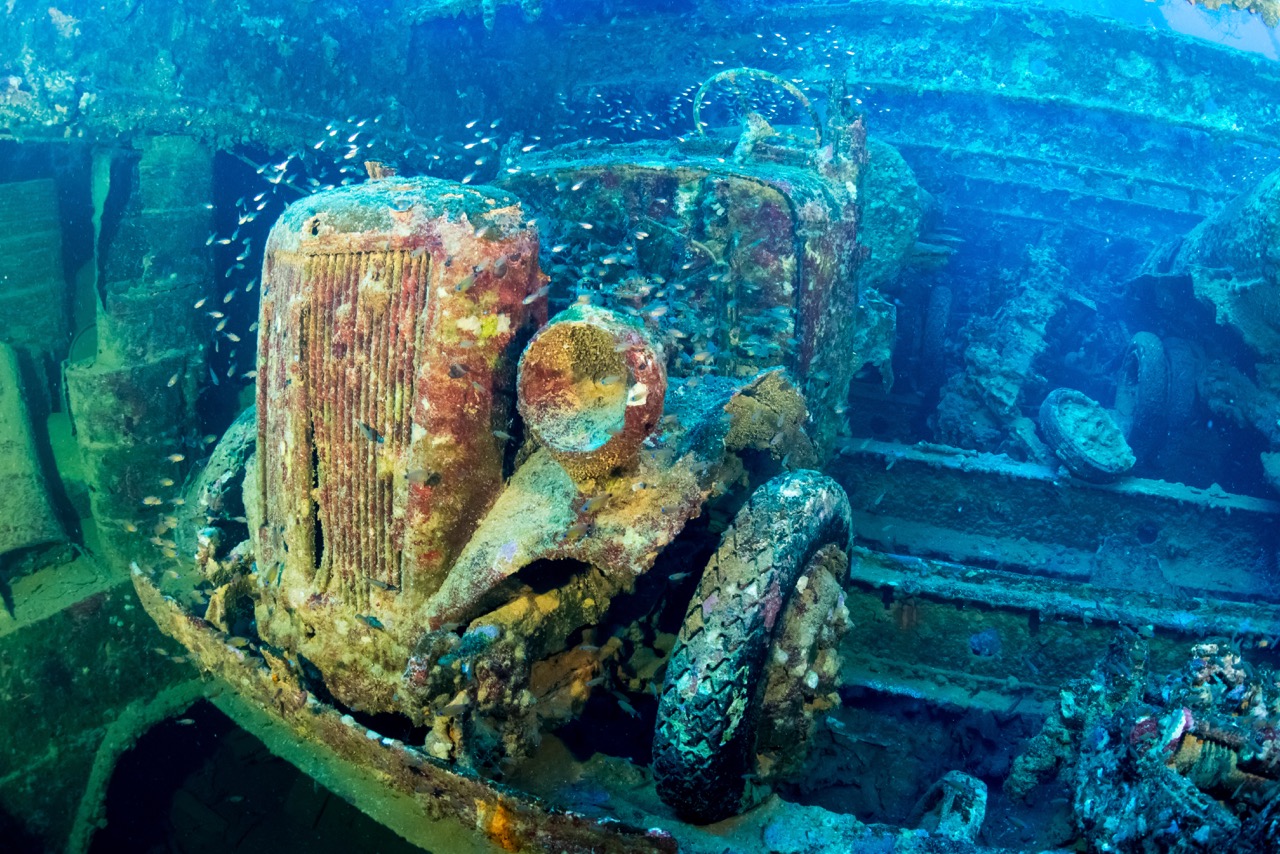
4. San Francisco Maru – Chuuk Lagoon, the Federated States of Micronesia
At the end of World War II, Chuuk (Truk) Lagoon in Micronesia was a Japanese naval base. The concentration of ships was a target for Allied forces who ultimately bombed the lagoon in 1944, sinking 12 warships, 32 merchant ships and 275 aircraft. One of these is the San Francisco Maru. This 385-foot (117-meter) passenger ship now sits upright in 210 feet (64 meters) of water. You’ll find the deck at a depth of 160 feet (49 meters), but you can usually see the top of the wreck from recreational limits if you aren’t a tec diver. Be sure to check out the holds if you’re feeling comfortable and properly trained. They are stuffed with military ordinance, including mines, torpedoes, and three tanks.
- Dive Type: Wreck Dive
- When to Go: December to April
- Recommended Training: Wreck Diver, Deep Diver
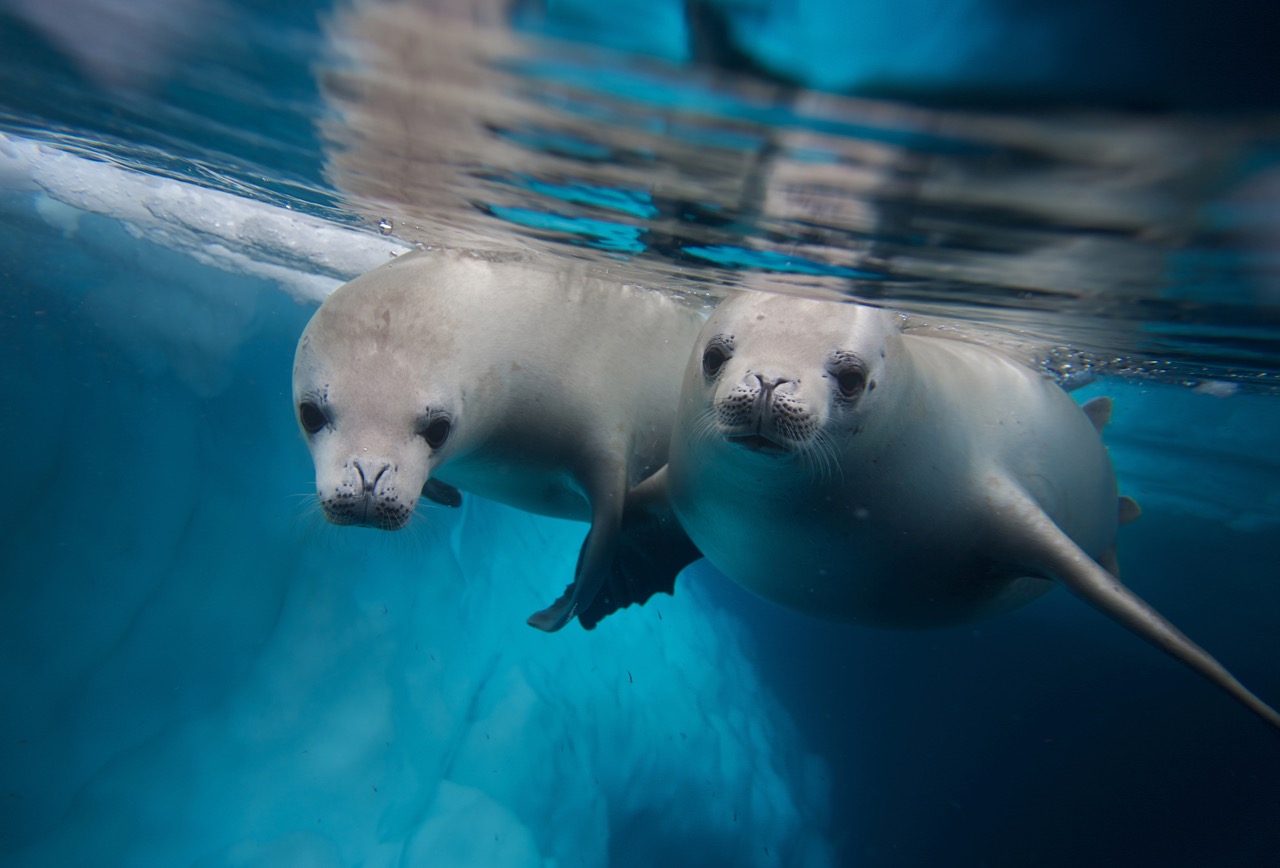
5. Peterman Island – Antarctica
Cold water diving and ice diving in themselves are extreme, but throw in the journey to one of the most remote places on Earth and you have one of the most extreme dive sites ever. Antarctica has plenty to offer divers. Views of ice formations from under the water to unique marine life are just the tip of the iceberg at the 10 dive sites frequented by liveaboards. Of course, the penguins, seals and various gastropods make for other fascinating sights. As the diving in Antarctica is challenging in terms of temperature and overhead environments, only experienced divers should make the arduous journey.
- Dive Type: Ice / Cold Water Dive
- When to Go: November to May
- Recommended Training: Dry Suit Diver, Ice Diver
6. The Shaft Sinkhole – Mt Gambier, Australia
Certainly extreme and possibly dangerous without the proper training, the Shaft Sinkhole in Mt Gambier, Australia begins with a descent through an impossibly narrow hole. Because it’s such a small opening, you’ll need to take off all your equipment and be lowered by your dive buddies to the water below. Then your equipment will be lowered to you. Cavern divers will need to stay in the initial area in order to see natural light. However, cave divers can explore a series of pitch black caves. Two dive lights, a solid dive plan and short dive times are essential to ensure you don’t get lost and have enough air to get back to the surface. While the Shaft Sinkhole makes for a pretty epic story, recreational divers may be more comfortable at the nearby Kilsby’s Sinkhole.
- Dive Type: Cavern Dive (to Cave Dive)
- When to Go: Year-round
- Recommended Training: Cavern Diver
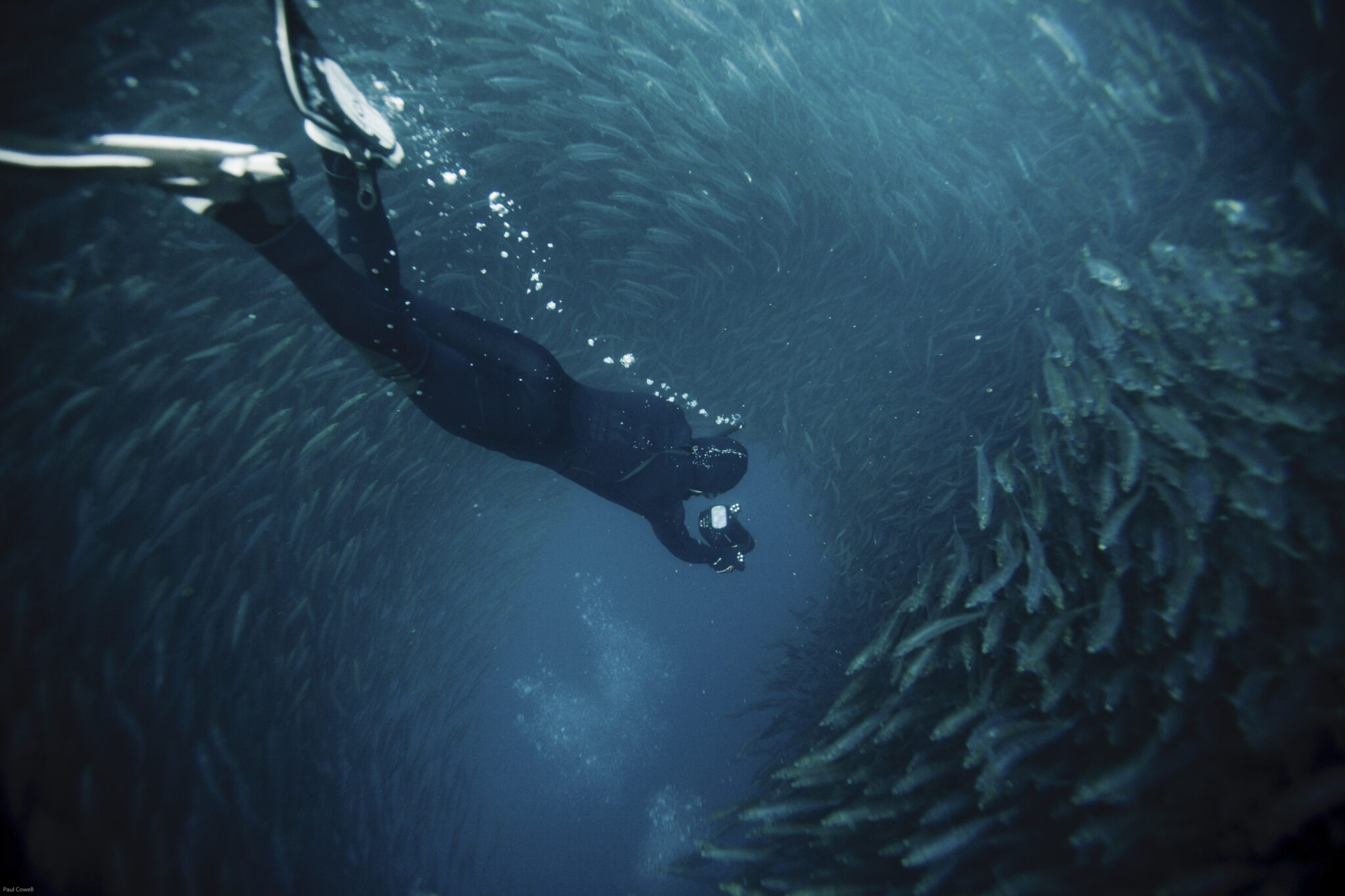
7. Sardine Run – Agulhas Bank, South Africa
An action-packed dive from start to finish, the sardine run annually attractions pelagic-loving scuba divers to South Africa’s coast. Millions of small sardines “run” up the coast of South Africa, trying to reach Agulhas Bank where they will spawn. En route, predators wait to round up the tiny fish. Birds dive in, dolphins circle, sharks charge through and massive whales rise from the deep to get a bite of the action. Meanwhile, dive boats crisscross the chilly seas in search of bait balls. When one is found, divers jump in to witness the cacophony of feeding seen few other places in the world.
- Dive Type: Blue Water
- When to Go: May to July
- Recommended Training: Advanced Open Water Diver, Drift Diver, Freediver

8. Lava Tunnels – Isabela Island, Galapagos
Select liveaboard and dive resort itineraries in the Galapagos Islands of Ecuador are now offering a uniquely exciting snorkeling excursion. Near Isabela Island, the most volcanically active island in the region, you’ll find a series of lava tunnels that divers can fully enter. The formations are always changing, therefore no two snorkel trips are ever the same. On top of the excitement of swimming through recently created lava tubes, you’ll also get a glimpse of the endemic species for which the Galapagos are famous.
- Dive Type: Volcanic Snorkel
- When to Go: December to May
- Recommended Training: Skin Diver

9. Heli-Diving at Eureka Oil Platform – Los Angeles, California
What makes this dive extreme is not the dive site itself, but the entry. Los Angeles, California is one of the only places in the world where it’s possible to take the PADI Heli-Diver 1 specialty course. To qualify as a specialty diver, you’ll need to make two jumps and dives in the area, and most likely one of those will be at the Eureka Oil Platform, an 8-minute helicopter ride from land. In the chopper, you’ll already be geared up and ready for the 15-foot jump into the water below. In a highly-practiced and technical dance between pilot, “jump master” and divers, each participant free falls into the site, where a dive boat and Divemaster are waiting to continue with normal diving procedures.
- Dive Type: Heli Dive (to Oil Rig Dive)
- When to Go: Year-round
- Recommended Training: Heli-Diver 1
Have you added any of these extreme dive sites to your bucket list? Get in touch with a PADI Travel Scuba Travel Expert to plan your trip now.
Written by guest blogger, Sandro Lonardi.

